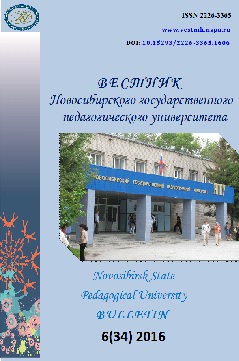Конструкции с местоимением МЫ: формирование актуальной или окказиональной коллективной идентичности
Structures with the pronoun мы: formation of actual and occasional collective identity
Author(s): Boris Yustinivich Norman, Anna Mikhailovna PlotnikovaSubject(s): Morphology, Lexis, Semantics
Published by: Новосибирский государственный педагогический университет
Keywords: Pronoun 'мы'; semantics; pragmatics; syntactic structures; identity; social status
Summary/Abstract: The article discusses how Russian speakers linguistically construct their social self-portraits by relating themselves to specific social groups. The analysis focuses on syntactic structures with semantics of taxonomic or evaluative characterization which fit the mod-el ‘Мы – N’ ('We are N'), where N is a noun or a personal pronoun. The relevant linguistic units found in the utterances in question were selected on the basis of the data provided by ideographic dictionaries. The most typical way of collective self-presentation is the usage of social class indices as predicates. These are words referring to the person’s professional, religious, political and other identity: for example, ‘we are writers’, ‘we are scientists’, ‘we are Orthodox Christians’, ‘we are the Proletariat’, or ‘we are peasants’. In self-identification formulae, pronoun 'мы' expresses collectivism by suppressing individuality of its members and focusing instead on the unity of the group which corresponds to index 'мы’. The analysis has established that there are certain differences between collective names and plural forms in the Russian language. Linguistic units used for self-presentation and self-identification perform diverse functions due to the fact that a person as a member of various macro and micro social structures enters into multiple social relationships. Each of the five models of social self-identification and self-presentation described in this article is linked to the strategies of speech behavior by which the speaker identifies themselves with a specific social group thus attaining significant personal goals. This research makes a special emphasis on the structures in which self-identification is used to create a ‘speech mask’, a special figure of speech. We analyze metaphoric expressions which allow the speaker to create unique characteristics of identity. Although formally these are structures of collective self-identification, semantically they serve as a way of speaker’s self-identification and express his or her intention to be included into a certain social group.
Journal: Вестник Новосибирского государственного педагогического университета
- Issue Year: 6/2016
- Issue No: 6
- Page Range: 126-138
- Page Count: 13
- Language: Russian

